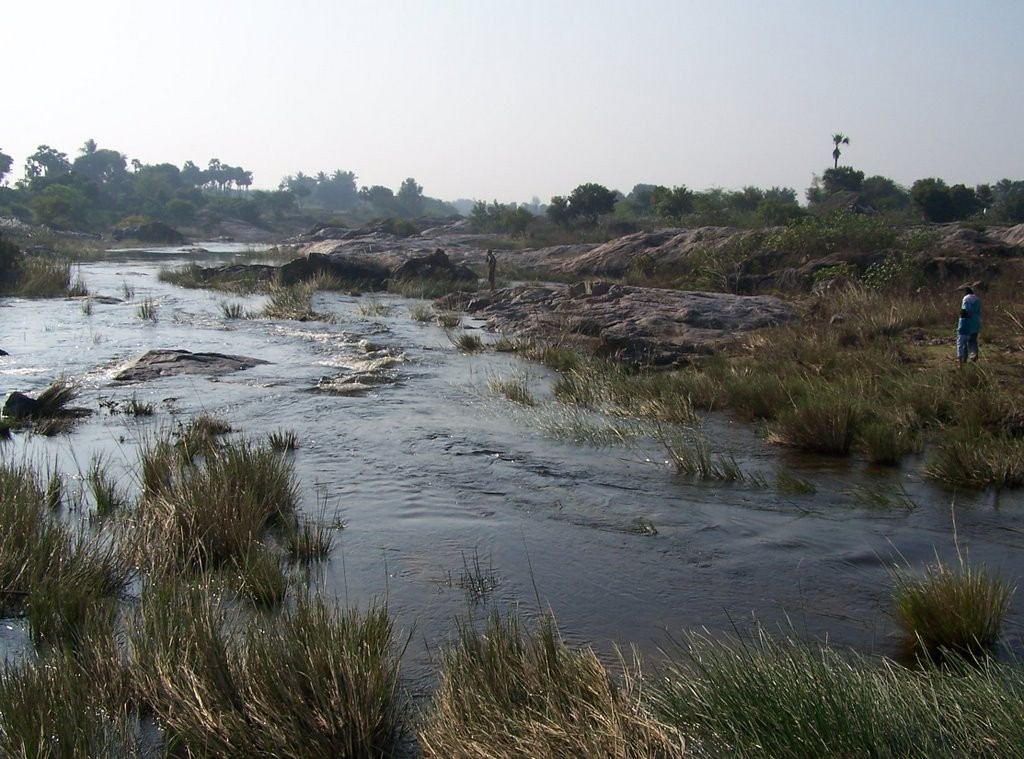#KnowYourRivers : Sankaraparani River
Degradation of water quality has become a current environmental issue in view of its importance in maintaining the human health and ecosystem. The conventional source of drinking water is from rivers, wells and bore wells which are been used as untreated. Quality of water generally refers to the mineralogical component of water, which are necessary to be at the optimum level so as to maintain the proper growth of plants and animals. Sankaraparani river is no exception.
Religion World will look at the rivers that call for immediate attention, because they have been polluted beyond repair. But the effort is to look at the river, its history, its use and how it was been brought to the state it is now. Our effort to write about these rivers is to enlighten the readers that they need attention and they can once again turn into lifeline for human race in their part. Today we bring, river flowing through Puducherry, Sankaraparani River.
Sankaraparani River:
The Sankaraparani River is popularly known as Gingee because it originates on the western slope of Gingee Hill in Viluppuram District of the State of Tamil Nadu. It has two sources, one in the Pakkammalai hills and one in the mountains of Melmalayanur. They join near Thenpalai village to form the main river. Sankaraparani is also known as Varahanadi or Gingee River.
River Sankaraparani, flows to the east. The Annamangalam surplus joins near Melacheri. Then the river turns south in eastern part of Singavaram village and then flows east again. Second tributary Nariyar Odai joins Sankaraparani near Uranithangai village.
Near Vallam village, the river turns southeast. The third tributary Thondiar joins near Vidur. The Vidur reservoir across Sankaraparani is situated just below. From Vidur reservoir, Sankaraparani flows southeast. Pambaiyar tributary joins near Radhapuram. Then Sankaraparani enters Puducherry Union Territory at Manalipet. Pambai tributary joins Sankaraparani near Sellipet.
The total length of the river is 78.5 kilometres (48.8 mi). Of the total length, 34 kilometres (21 mi) flows in Puducherry.

Must Read : #KnowYourRivers : Vaigai River
Tributaries
Sankaraparani river has six tributaries namely: Annamangalam surplus, Nariyar Odai, Thondiar, Pambaiyar, Pambai, and Guduvaiyar.
Mythology
The name suggests that this river ‘Sankaraparani’ has the same power as of ‘Gangai Nathi’ (The River Ganges) as per Hindu Mythology. Every year in the tamil month of ‘Maasi’ (Feb-March) during the ‘Magam’ Nachathiram day this temple festival is celebrated. ‘Maasi Magam’ – ten days festival is celebrated including car festival on the ninth day. Ancient temples are located on the banks of Sankaraparani. Out of 22 Paadal Petra Sthalam in Nadu Naadu, four temples are located on the banks of Sankaraparani. Among the temples Gangai Varaga Natheeswarar Temple located at Thirukanchi in Puducherry named after this river ‘Varaga Nathi’.
Ecological Issues
River Sankaraparani, drains into the Bay of Bengal on the southern side of Pondicherry region. Also known as river Gingee or Varahanadhi, it has its source at the hills of Malayanur in the South Arcot District of Tamil Nadu. The River splits off into two branches namely Chunnambar in the south and Ariankuppam River in the north. This river is not a perennial river and it flows only during rainy season and floods.
Ariankuppam River, which originates from the River Sankaraparani, at Nallareddy Palayam (about 10 kms from the sea shore) usually gets cut off from River Sankaraparani, during non-monsoon period and the water is more or less stagnant during other seasons. Due to tremendous increase of population in this area, the generation of wastewater has also increased. The waste generated from areas near to Ariankuppam River is let out into the river directly, deteriorating the water quality of the river.
Domestic sewage discharges in water bodies increase the concentrations of organic matter and nutrients that can affect the productivity of the system. In India it is reported that about 70% of the available water is polluted. It is observed that human activities are the major factor in determining the quality of the surface and groundwater through atmospheric pollution, effluent discharges, use of agricultural chemicals, and land use. The chief source of pollution is identified as sewage constituting 84 to 92 percent of the waste water. Industrial waste water comprised 8 to 16 percent. Pollution of river and river side by garbage and wastewater is significant and is dated near settlements and mouth zones of the rivers.
Must Read : #KnowYourRivers :Thamirabarani River









